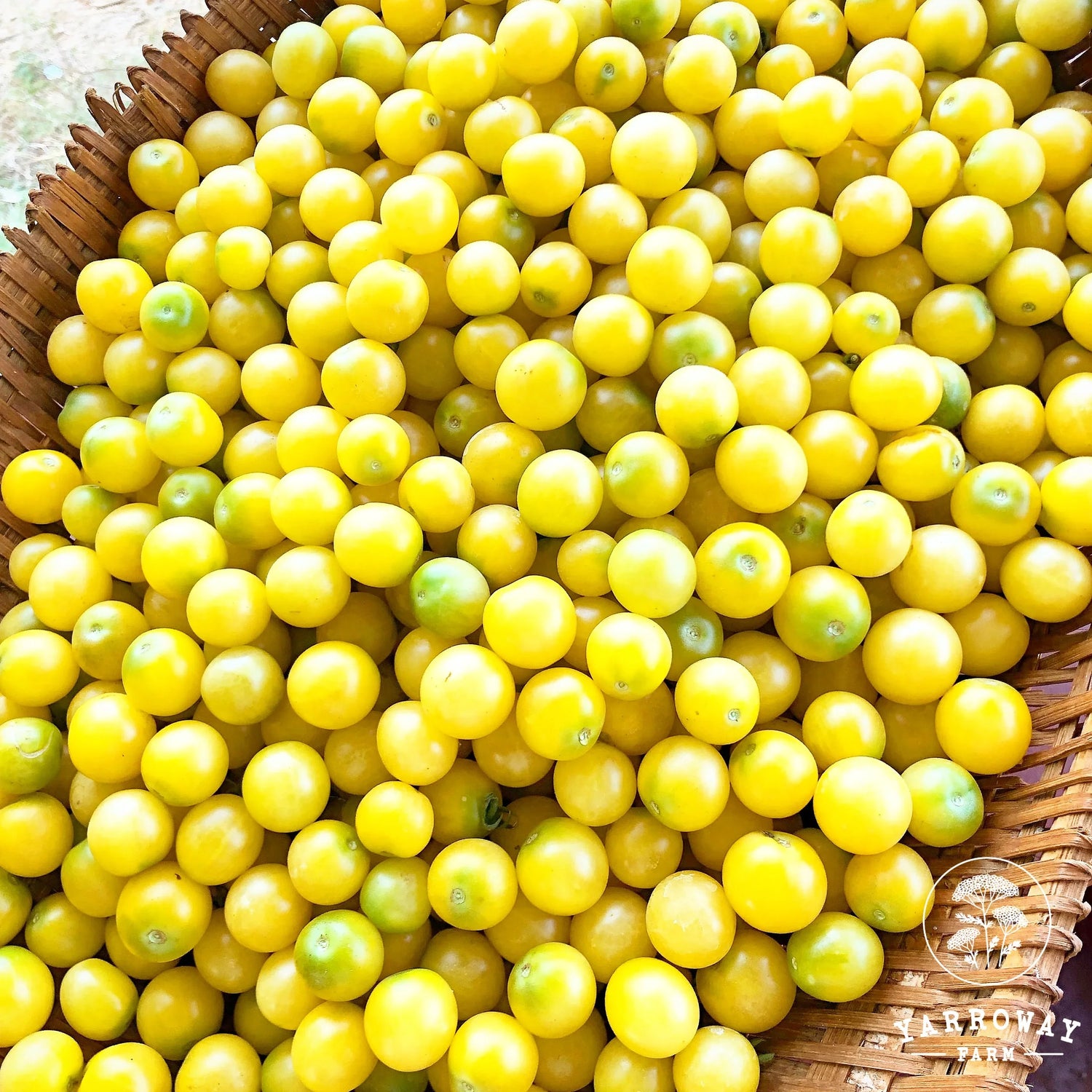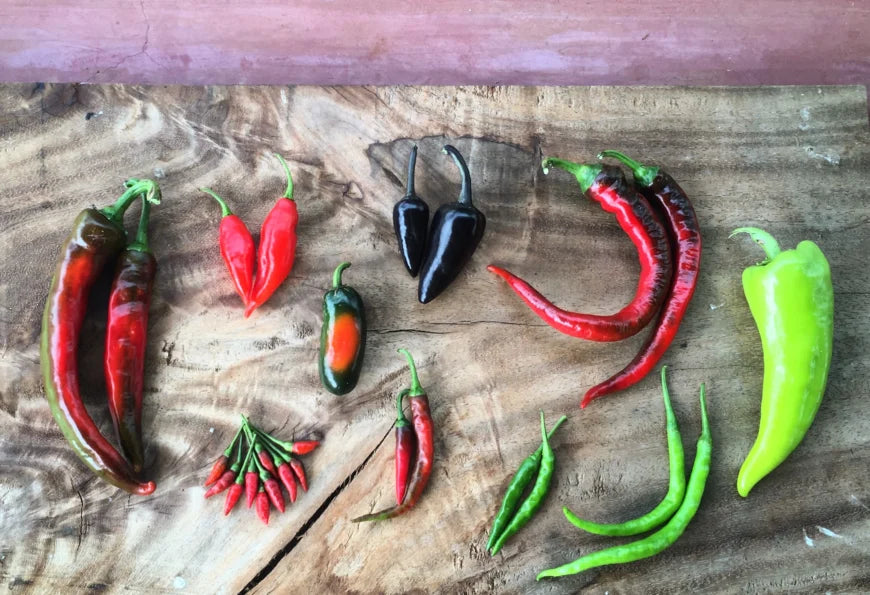Peppers are native to South and Central America. Once Christopher Columbus got his hands on them, they were quickly spread throughout Europe and beyond. They are subtropical, so perform best in warmest climates. Sweet and Bell Peppers are usually rounder and larger than Chilli Peppers. In their native South America they are perennials, but we grow them like tomatoes, as annuals. All belong to the capsicum family, and they come in so many shapes and colors, that we can get lost keeping track.
CHILI/HOT PEPPER- Common Varieties: Asian Small Chilli, Birds Eye, Jalapeno, Habanero, Cayenne, Pimento, etc.
SWEET PEPPERS Common Varieties: Bell Peppers, Round Peppers, Italian Long Peppers, etc.
Sowing Style: Sow in the nursery trays and Transplant at true leaf stage. You can sow them outdoors on a soft seedbed before transplanting (avoid doing this if the nights are cold, you have pets who can destroy the seedbed, or if you cannot water the bed frequently).
Time to Sow: Peppers do well in warm weather, just like tomatoes. Sow in monsoon and transplant after heavy rain period has concluded, early Autumn so they grow through warm winter days, and late winter so that you have fruit all through summer. Pepper seeds can be a bit challenging to germinate and lose their viability quickly if not kept in cool conditions. Sowing them at the beginning of winter might slow down germination and overall growth rates during the cold nights. A greenhouse or cold frame can resolve the issue to some extent. Transplant them deep in warm soil.
Plant Spacing: 12-18in with 1.5-3.0ft spacing between rows. Refer to your seed packet or the product page for specific spacing requirements.
Good Companions: Basil, Carrots, Cucumber, Eggplant, Marigold, Mint, Okra, Onions, Oregano, Parsley, Rosemary, Squash, Sweet Potato, Swiss Chard
Bad Companions: Beans, Brassica Family (Cauliflower, Cabbage, Broccoli, Kohlrabi, Mustards), Dill, Fennel, Zucchini
Soil and Cultivation Requirements: Peppers love heat and sunshine; cold regions should consider black plastic mulch to warm the soil. They prefer light well-drained soil and mature compost during planting. Too much nitrogen rich compost needs to be avoided because that can lead to more leaf growth than fruit. Do not mulch at the root of the plants, since the topsoil needs to stay dry. Keep an eye out for fungal diseases at the root level.
Irrigation: They need daily watering from seedling to flowering stage. From that point onwards you can cut down the watering to once in 3-5 days or just giving very less water every day. Never water pepper plants from the top. Best way to irrigate it to give water to the roots directly and drip irrigation is the best method for larger plots. Too much water will cause the fruit to rot and drop. They do not like pouring rains and storms, so stall watering plans in such circumstances.
Harvesting and Storing: Peppers ripen to green and then to hues such as red, yellow or orange, depending on the variety. Cut the fruits with an inch of stem so they last longer, don’t tug or pull the fruits off the plant. Picking off the first fruit when green encourages others to be produced. They store well and longer in cool temperatures.


